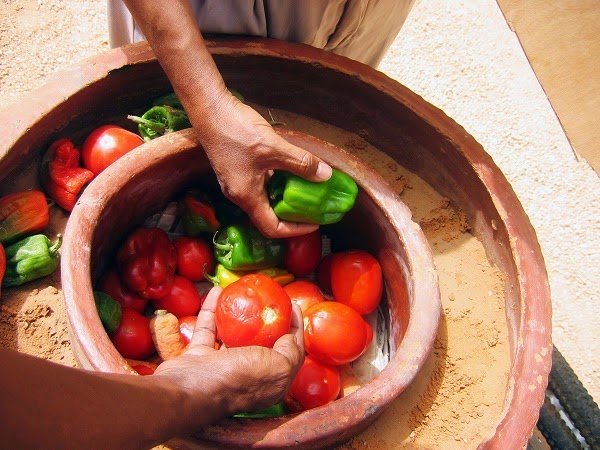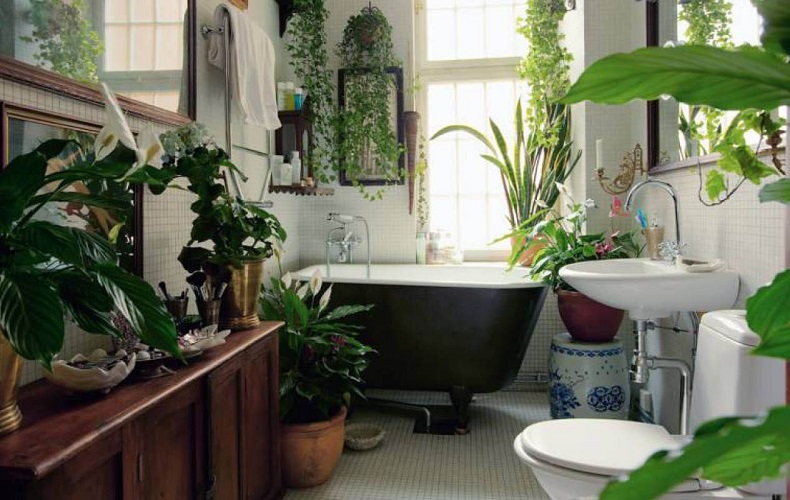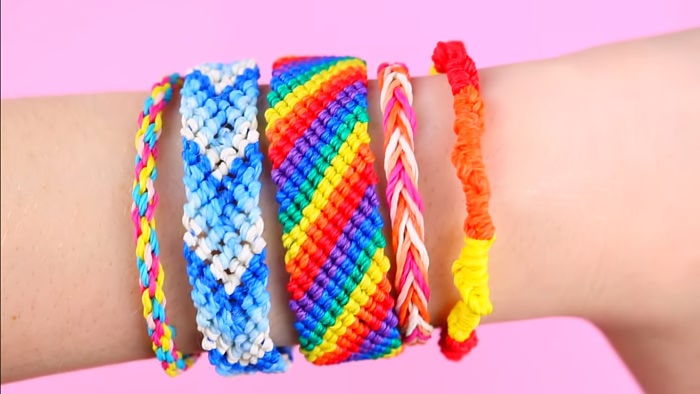A Zeer pot is an evaporative cooler used in rural parts of Africa and the Middle East to keep vegetables fresh. They consist of two clay pots, one nested inside the other, with the gap between them filled with wet sand.

Zeer pots were rediscovered and popularized in the 2000s by Nigerian professor Mohammed Bah Abba.
Manufacturing and distributing the pots to the poor, was able to bring refrigeration to tens of thousands of impoverished farmers and housewives, allowing them to extend the shelf life of their products from days to weeks.
For his efforts Bah Abba was awarded the Rolex Award for bringing life-changing technology to people in need.
The sand serves as a thermal mass that helps keep the pot cool once it has cooled down, and acts as a wick to diffuse moisture along the walls of the pot.
When placed in a shady, windy location, evaporation of water from the outer surface cools the pot. If you have a good breeze, or a fan powered by a solar panel blowing into the pots, the pots can get very cold.
Imagine that the cooling is obtained as when you get out of a pool when the wind blows. Now imagine the wet wind chill throughout the day.
That like the pot works with a constant breeze.
Unless the air is very dry and the pot is exposed to a constant breeze, it usually won’t get as cold as a refrigerator, but it will keep the veggies fresh for a couple of weeks.
If you have cool, dry air and a constant breeze, the inside of a Zeer pot can cool down to around 40˚F, 4 to 5 degrees Celsius.
Think of it as an open cycle refrigerator. Conventional refrigerators evaporate a refrigerant in a closed circuit to absorb heat from its interiors, then compress the refrigerant vapor in the coils at the rear to condense and to expel heat.
The Zeer planter simply uses water as a coolant, and leaves the condensation of nature.
Tips for building a Zeer planter
In underdeveloped parts of Africa and the Middle East, Zeer pots use custom pots made by local potters.
Here in the developed world, we have to settle for pre-made pots from the hardware store. There are some drawbacks, but also some advantages brought by these limitations.
If you live in a hot and humid area, the zeer pot is probably not going to do well; high humidity results in much less evaporative cooling. However, this is not final.
Note: direct sunlight will cancel all cooling effects.
If the pot is left in direct sunlight, the amount of heat given off by the sun will totally cancel out the evaporative cooling effect. The cooling is supposed to come strictly from wind-induced evaporation, and not from exposure to the sun.
If you are building a Zeer pot, be sure to keep it in the shade for the best effect.
Note: the outer pot must be unglazed clay or terracotta.
The clay-colored plastic pots that are copies of them are not usable for this purpose; the pot is cooled by evaporation of water through the wind, which has been absorbed through the outer surface. The plastic pot is non-porous, and it will not function as an evaporating surface.
Earthenware pots also do not work for this purpose. The inner container does not necessarily have to be unglazed clay, but the outer pot must be unglazed because glazed pots do not absorb moisture from the outer surface.
Note: many medium pots work better than one large one.







